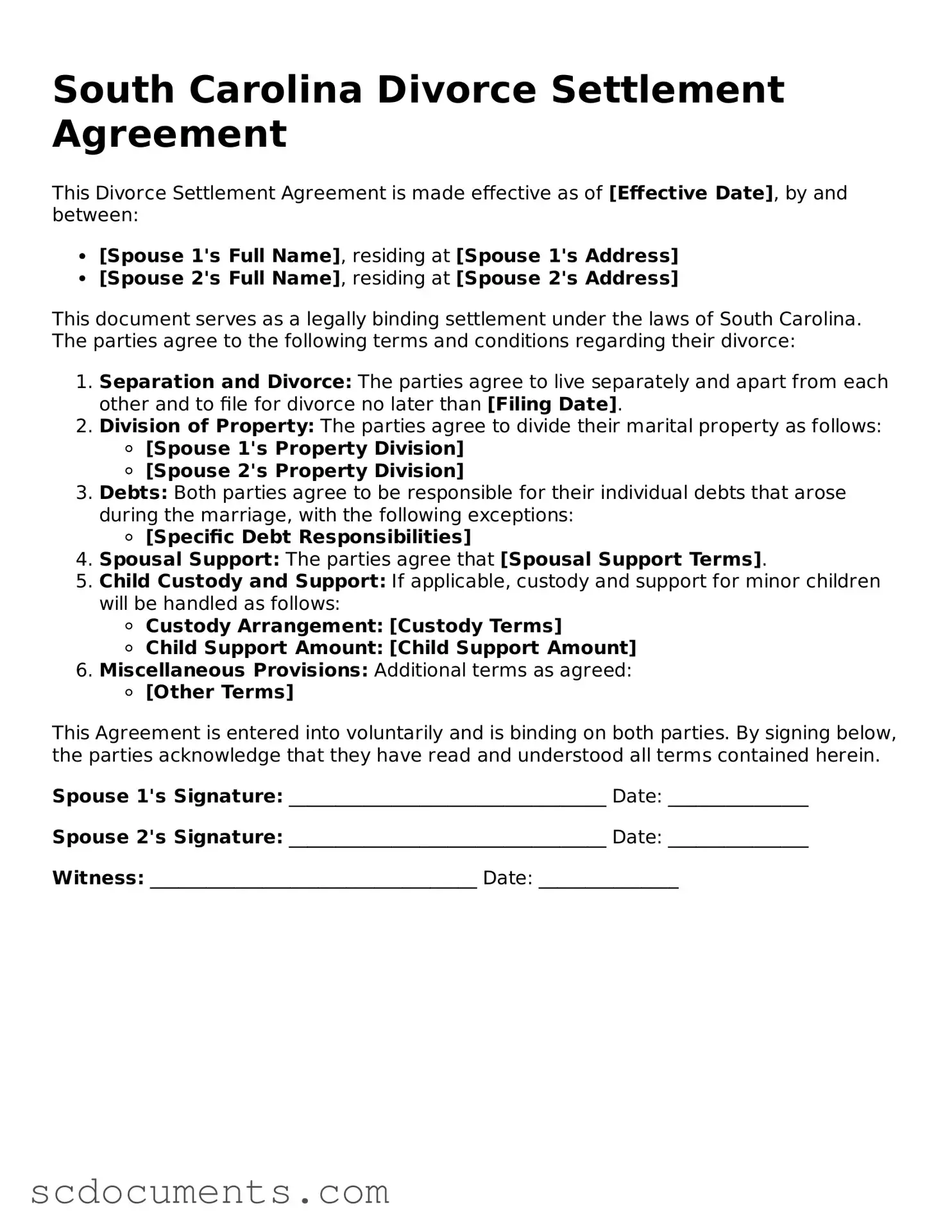Legal South Carolina Divorce Settlement Agreement Form
The South Carolina Divorce Settlement Agreement form is a legal document that outlines the terms and conditions agreed upon by both spouses during a divorce. This form covers important aspects such as property division, child custody, and financial support. By clearly detailing these agreements, the form helps to facilitate a smoother divorce process and ensures that both parties are on the same page.
Access My Divorce Settlement Agreement
